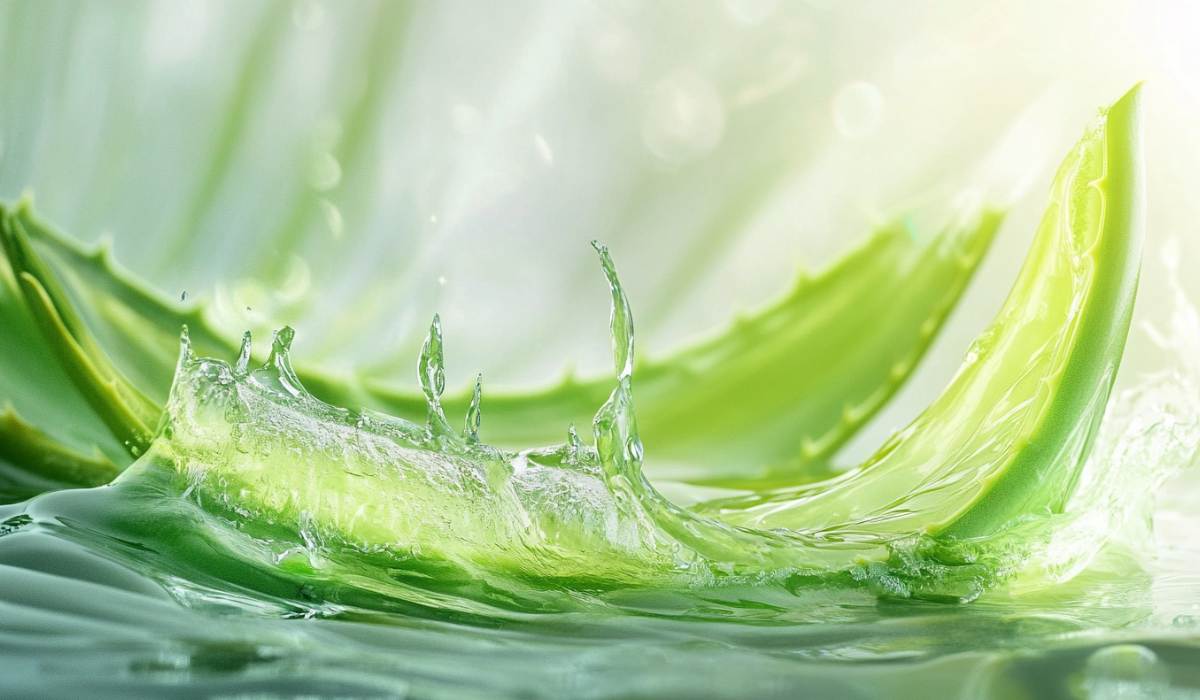Aloe Vera for Skin: 10 Practical Ways to to Use for Beginners
You’ve got a bottle of aloe vera gel sitting in your cupboard, but you’re not quite sure what to do with it beyond treating the occasional sunburn.
Am I right?
Perhaps, you’ve seen some recipes online for using aloe vera in skincare and haircare that have piqued your interest… but you’re hesitant to give them a try or trust what they say. Maybe you think it’s not “aimed” at “that sort of thing”.
Probably, you’re worried that your aloe vera gel will expire before you figure out how to use it properly. Or worse, you fear there’s some sort of secret(s) everyone seems to know about the gel and how to use it for skincare and you’re thinking “how the heck do I go about it SUCCESSFULLY??”
😎
Let’s get started.
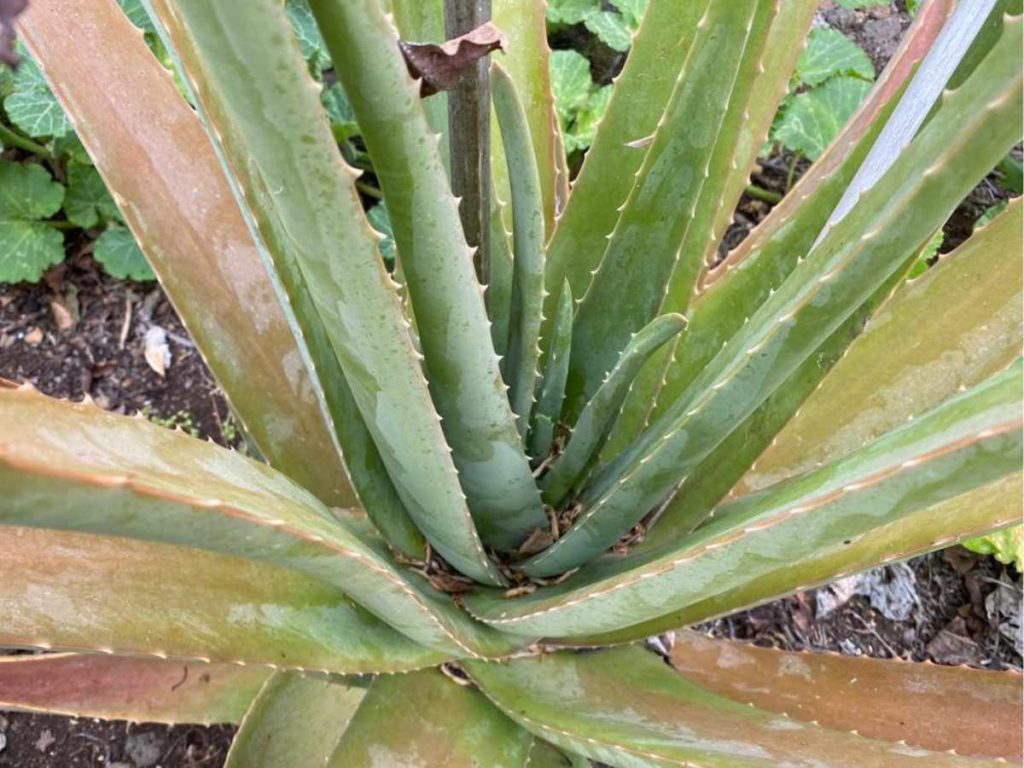
The in/out/ALL OF it
The thing is this: the truth is INCREDIBLY simple.
- First, you cleanse.
- Then, you squeeze a bit of your aloe vera gel into your hands. You apply this bit into your face, massaging it into your skin nicely, every morning, every night, every morning, every night…
You make this part of your routine.
Every morning. Every night.
You then go about what you usually do. Serum? Apply. Moisturiser? Apply. Sunscreen? Apply. Some oil blend? Apply. And so on.
As long as you put on the aloe vera gel first (after cleansing) you’ve already DONE MORE FOR YOUR SKIN THAT MOST COMMERCIAL PRODUCTS would ever do.
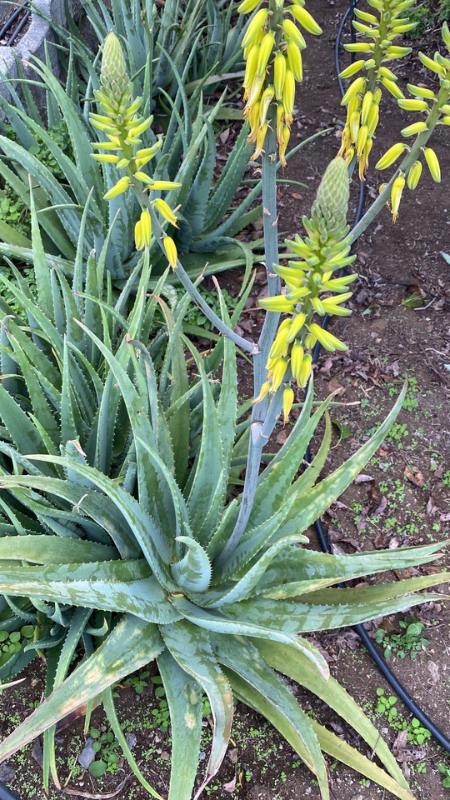
Too easy?
Does that sound too easy?
You might be wondering, “What will it actually do for me?”
You like the idea of using something natural, but will it be effective? I mean, REALLY effective? As in TACKLING fine lines, wrinkles, luminosity, oiliness, unevenness, etc etc?
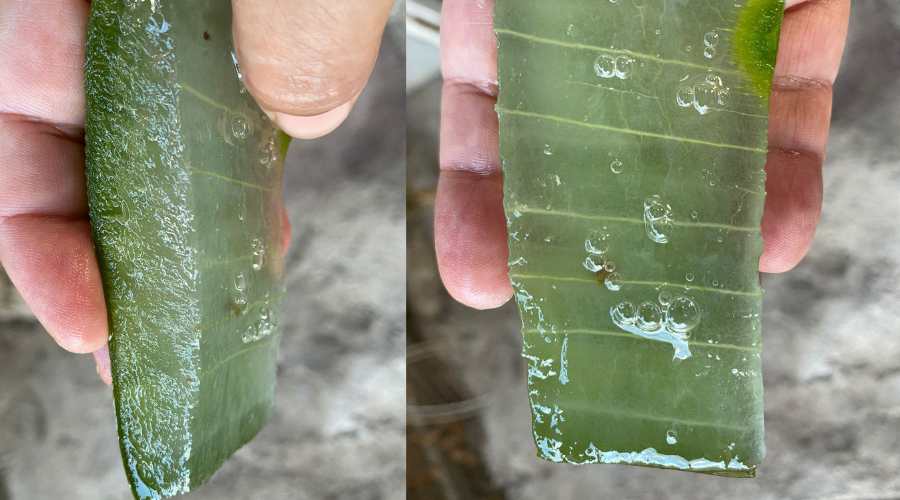
In fact, what would the REAL benefits be? Could it TRULY outperform commercial serums, for example? Why should I replace anything with aloe vera gel? Should I use it alongside my other (expensive) products or can it actually be a replacement??
In the guide below I will show you EXACTLY how to make the most of that bottle of aloe vera gel lurking in your cupboard. (By the way, you can extend its shelf life by storing it in the refrigerator.)
Ready??
Let me BORE you first with some of the INCREDIBLE components and WHAT THEY DO to your skin
The below is a technical breakdown. Please at least skim through. It’s what explains how the gel DOES what it DOES to your skin.
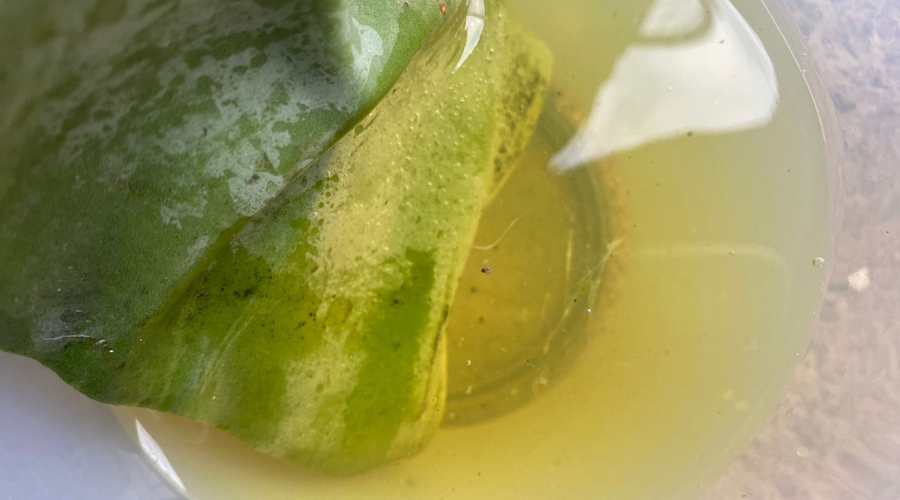
Key components:
- Polysaccharides: These are long-chain sugars that provide hydration, helping to form a protective layer on the skin, locking in moisture.
- Vitamins: Aloe vera is rich in vitamins A, C, E, and B12, which have antioxidant properties that protect the skin from free radicals, slowing down visible signs of aging.
- Enzymes: It contains enzymes like amylase and lipase that can help exfoliate dead skin cells, encouraging smoother, clearer skin.
- Amino Acids: Aloe vera provides key amino acids, including glycine and histidine, which are crucial for tissue repair and skin regeneration.
- Lignin: This enhances the penetrative ability of aloe, allowing other beneficial ingredients in your skincare routine to reach deeper into the skin layers.
- Saponins: These compounds give aloe vera its cleansing and antimicrobial properties, helping to combat acne and keep skin clear.
- Salicylic Acid: Aloe vera naturally contains this mild exfoliant, which helps unclog pores and prevent breakouts.
- Hormones: Auxins and gibberellins present in aloe vera contribute to its healing and anti-inflammatory properties, making it ideal for soothing irritation and redness.
If you like the chemistry side of things, here’s a GREAT article on aloe vera components and what they each do. Take a look, you won’t find this info that easily elsewhere!
What aloe vera gel does for the skin:
- Deep Hydration: Its high water content and ability to lock in moisture make it perfect for keeping skin supple and hydrated without clogging pores.
- Soothes Irritation: The cooling effect of aloe, along with its anti-inflammatory components, can help reduce redness, swelling, and discomfort, making it great for sensitive or sunburned skin.
- Boosts Collagen Production: Aloe vera supports skin elasticity by stimulating fibroblast activity, which helps produce collagen, giving your skin a firmer, smoother appearance.
- Antioxidant Powerhouse: The vitamins and minerals in aloe help neutralize free radicals, preventing oxidative stress that leads to premature aging, fine lines, and wrinkles.
- Healing & Repair: Aloe’s enzymes and amino acids promote faster healing of damaged skin and minimize the appearance of scars and blemishes.
- Exfoliates & Clears Skin: Its mild salicylic acid content helps to gently exfoliate dead skin cells, unclogging pores and promoting clearer, more radiant skin.
(Take a look at my article on aloe vera for skin and health if you want comprehensive info on this.)
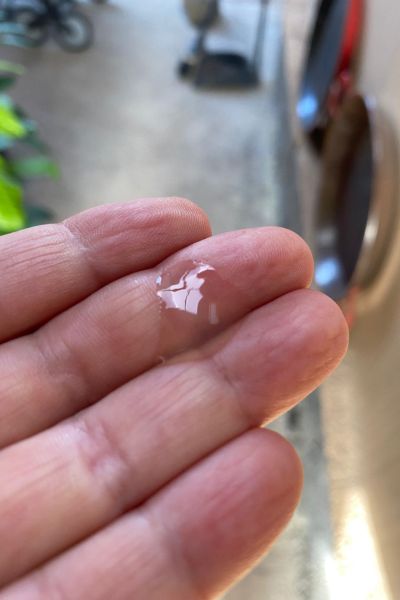
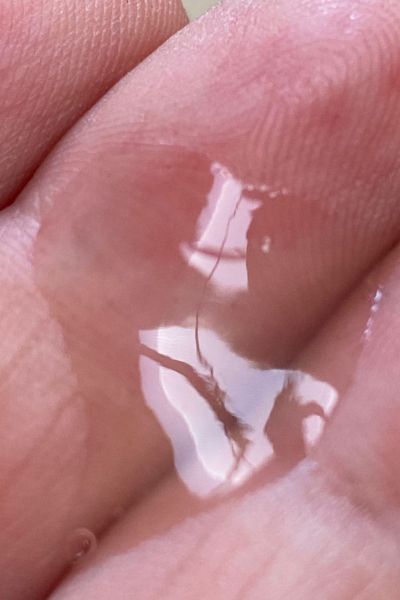
In short, aloe vera is an all-in-one solution that provides hydration, protection, and healing to your skin, making it an essential base ingredient in your skincare routine!
It is very important that you keep the information above at hand. You see, you might “forget” why you’re applying aloe vera daily and get lazy… and find it (by force of habit) attractive again to grab that jar of commercial product packed with unnecessary ingredients.
So, keep this article handy. You’ll want to revisit again and again the WHY you chose to use aloe vera instead.
Let’s keep going.
1. Using aloe vera as a facial moisturiser
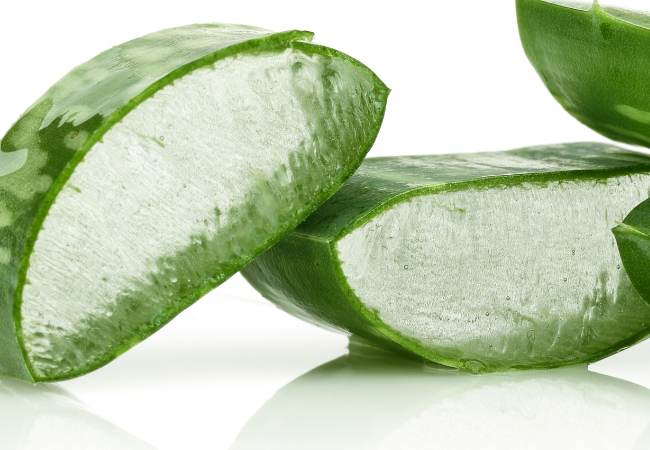
Aloe vera has been a trusted natural skincare remedy for centuries, and using it as a facial moisturiser is one of the easiest ways to give your skin A LOT of INSTANT love.
I use it every single day on my face, and let me tell you, my skin is glowing like there’s no tomorrow! (I just had a Zoom meeting, and I couldn’t help but notice how lovely my skin looked on camera. 🌟)
So, if you’ve got a bottle of aloe vera gel, you’re already halfway there…
Below, I’ll walk you through everything you need to know about using it on your face and why it can be a total game-changer for your skincare routine.
Benefits of aloe vera for facial skin
Aloe vera WILL make your skin look better. I promise you. But you have to be consistent. Give it a few months at least.
I’ve been using it for years, day in and day out, and yes, but you should be seeing the difference within months, perhaps even just weeks.
- Hydration: Aloe vera is made up of 99% water, making it an amazing natural moisturiser that quenches your skin’s thirst.
- Anti-inflammatory magic: Got redness or irritation? Aloe vera may help calm things down and soothe your skin.
- Antioxidant boost: Packed with vitamins A, C, and E, it helps protect your skin from free radical damage, keeping it healthy and glowing.
- Super gentle: It’s suitable for most skin types—even if you’ve got sensitive skin, aloe vera is a safe bet!
- Acne-fighting potential: Thanks to its natural salicylic acid, it may also help with breakouts.
- Lightweight and non-greasy: Not heavy at all, and absolutely not greasy (because of the amount of water) —aloe vera is perfect for oily and combination skin types.

I honestly believe this can outshine any pricey commercial facial moisturiser you’re using.
When blended with a quality base or carrier oil that suits your skin, the combination will most definitely surpass those expensive products. Trust me.
How to use aloe vera as a facial moisturiser
The steps below are very easy to follow.
Here’s how to use aloe vera on your face for that glowing skin:
- Cleanse your face: Start with a clean slate by using your regular cleanser.
- Pat dry: Gently pat your face dry with a clean towel.
- METHOD 1 – Apply aloe vera: Take a small amount of aloe vera gel (about the size of a 5p coin) and gently spread it over your face and neck, massage it in.
- METHOD 2 – Mix with a carrier oil: For an EXTRA boost of hydration, mix a small amount of aloe vera gel (about the size of a 5p coin) with a few drops of a carrier oil like jojoba. This combo works wonders for locking in moisture, especially if you have drier skin.
- How to do it: Place the aloe vera gel in your palm, add 2-3 drops of jojoba oil, and mix it together with your fingertips before applying it to your face.
- Massage method: Using your fingertips, massage the gel-oil mixture into your skin with upward circular motions to help it absorb. I also apply it to my décolletage area.
- Allow to absorb: Let the aloe vera on its own or aloe vera and oil blend sink into your skin for a few minutes.
- Follow with sunscreen: If you’re applying this in the morning, don’t forget to finish with a broad-spectrum sunscreen, as aloe vera doesn’t provide enough sun protection.
This little mix gives your skin a serious hydration boost while keeping it soft and smooth.
(I haven’t yet found a reliable source on the exact sun protection aloe vera offers on its own. While an amazing after-sun product, I believe on its own it doesn’t provide enough SPF to protect you properly in the sun.)
When to apply
Remember to be consistent!! Please don’t give up, keep applying at least once daily.
- Morning: Apply after cleansing and before sunscreen.
- Evening: Use after cleansing as the last step in your skincare routine.
- As needed: Can be applied throughout the day for extra hydration (and particularly to soothe irritated skin).
2. Soothing after-sun treatment

Ah, the classic use for aloe vera! That’s how I got started. I found some aloe vera plants on the side of the road, brought them home, and the rest is history.
At first, I wasn’t sure how to use it as an after-sun treatment. I would just cut it open and apply it, not really knowing if that was the right way to do it. I couldn’t find reliable information anywhere, especially about aloin. I knew aloin was a laxative, but I wasn’t sure if it could irritate the skin or how “dangerous” it really was.
After a long day in the sun, feeling a bit too exposed (and sometimes in pain), I hoped aloe vera would save the day—at least that’s what people said.
Eventually, I learned how to use it properly and effectively. And guess what? It’s so easy! Check out my instructions below.
(Just a quick note: If your sunburn is more severe—blisters, intense pain, or large areas of your skin affected—it’s best to avoid using aloe vera and seek medical attention instead. For minor burns, aloe vera can be soothing, but it’s important to avoid applying it directly to broken or severely damaged skin, as it may cause irritation or infection. If you’re unsure, always test a small area of skin first. And remember, aloe vera is great for relief, but it won’t undo the damage caused by overexposure to the sun, so prevention with sunscreen is key!)
Benefits of aloe vera for sunburn
Aloe vera is absolutely brilliant when it comes to soothing red sunburnt skin. And here’s why it works so brilliantly:
- Cooling effect: With its high water content, aloe vera delivers instant relief to hot, irritated skin, offering that much-needed cool down.
- Anti-inflammatory properties: It helps reduce redness and swelling, so your skin feels A LOT more comfortable.
- Moisturising like no other: Aloe vera helps keep your skin hydrated, which can prevent that dreaded peeling that often comes after a sunburn. Just keep reapplying to see if you can hydrate the area as needed.
- Pain relief: The natural components in aloe vera help take the edge off the discomfort and pain caused by sunburn.
- Promotes healing: Aloe vera can also give your skin a helping hand by speeding up the healing process, which is fantastic.
Well known for sunburn relief, aloe vera delivers because of the above reasons.
How to use aloe vera for sunburn
Follow these steps to give your sun-kissed (or sun-smacked) skin some much-needed TLC:
- Cool down: If possible, take a cool shower or bath to bring down your skin temperature.
- Pat dry: Gently pat your skin dry with a soft towel. Don’t rub—your skin is sensitive right now!
- Apply aloe vera: Squeeze a generous amount of cool aloe vera gel onto your hand. (Pro tip: Keep your aloe vera in the fridge for an extra cooling effect. It feels heavenly!)
- Gentle application: Very gently spread the gel over your sunburnt areas. No need to rub it in completely—let it sit on top of the skin.
- Reapply often: Don’t be shy with the aloe vera. Reapply every few hours or whenever your skin feels hot or uncomfortable.
- Stay hydrated: Remember to drink plenty of water, too. Sunburn can be dehydrating, so keeping your body hydrated will help your skin recover faster.
When to apply
- Immediately after sun exposure: The sooner, the better! Apply aloe vera as soon as you notice your skin is sunburnt.
- Every few hours: Keep reapplying throughout the day and before bed.
- For several days: Continue using aloe vera for a few days after the sunburn, even if the worst has passed. Your skin will thank you for the extra care.
Remember, while aloe vera is fantastic for soothing sunburn, prevention is always better than cure. Always use a good sunscreen and try to limit your time in direct sunlight. But if you do get caught out, reach for that aloe vera—it’s a proper skin-saver!
3. Natural makeup remover

I bet you never thought of using it to remove your makeup as it might feel like it’s a little too on the “thin” side for removing dirt, etc.
But, you CAN use aloe vera as a lovely, natural makeup remover. By now you know it’s very gentle on your skin, so it is in fact absolutely PERFECT for removing your makeup without those harsh chemicals we’re trying to avoid.
Here’s why I believe it works
- Hydration: Aloe vera is 99% water, so it keeps your skin hydrated while removing makeup.
- Very, very gentle: Ideal for sensitive skin, it soothes while cleansing.
- Non-greasy: Lightweight which means it won’t leave that oily residue.
Here’s how you can use it
- Mix a little aloe vera gel with a few drops of jojoba oil (or any oil you prefer).
- Gently, massage the gel over your face, especially around areas where you have the makup.
- Wipe it clean with a damp cloth or you can also use a cotton pad.
That’s it. You will feel refreshed and clean as well as moisturised. All in one step. Lovely!
4. Very natural hair conditioner
I ADORE using aloe vera gel as a hair conditioner. I actually don’t rinse it, I use it as a leave in product. That’s HOW MUCH I love it. It makes my curls look absolutely divine.
Why it works on your hair
- Hydrates: Packed with moisture, aloe vera helps quench dry, thirsty hair. My hair is frizzy and very dry, that’s why it LOVES the gel.
- Detangles: It is very easy to comb your hair once you put the gel on.
Shine booster: When I add the gel to my hair I can see that it leaves my hair looking very healthy and glossy. - Soothes the scalp: Great if your scalp is feeling dry or irritated, it will properly soothe it.
How to use it
Shampoo your hair as usual. Then, apply the gel from roots to tips. I also massage my scalp with it (more on that below).
Leave it for 5-10 minutes, or, if you dare, just leave it on til it dries. So, you can rinse it OR leave on. Try both, see which one you prefer. If you have frizzy, curly or dry hair like me, you’ll probably like leaving it on, like I do.
5. Soothing shaving gel
Many of you would have heard of this use (or already use it as a shaving gel). Perhaps you haven’t, if not, this is such a wonderful way to use aloe vera gel (it’s cooling and soothing properties make it a perfect shaving gel). Let me show you how to do it:
Here’s why it works very nicely as a shaving gel
- Smooth glide: Yes, as good as it sounds. Aloe vera creates a slick surface for your razor to glide easily. This means that it can help in reducing irritation.
- Calms the skin: The gel is known to calm redness but it can also help with bumps. It is great for sensitive skin.
- Hydrating: It can keeps your skin beautifully moisturised both during AND after you shave.
- Non-greasy: Being non-greasy aloe vera gel leaves no sticky residue (beware of gels using xantham gum as it can feel a little sticky, ALTHOUGH it is such a natural ingredient, I use it to make my own aloe vera gel as a thickener).
How to use it
Apply the gel to your skin when damp. Then shave as you would usually. Remember to rinse your razor frequently. Rinse off the remaining gel and pat dry.
6. Hand sanitiser

Another great use of aloe vera gel. Hand sanitisers tend to dry out the skin (I actually like this feeling, but not many people do). Being super hydrating, it is a wonderful natural ingredient as a hand sanitiser. Combine with an essential oil like tea tree makes it a perfect product for keeping germs at bay!
Here’s why it works very nicely as a hand sanitiser
- Moisturising: First of all, it is such a moisturising ingredient! It prevents dryness, which means your hands will feel soft as well as smooth.
- Soothes skin: It is great for sensitive skin, it will take care of any irritation.
- Natural antibacterial properties: Combined with alcohol, it can very effectively sanitise without being too harsh.
How to use
Mix 2 parts alcohol (at least 60% alcohol content) with 1 part aloe vera gel. Add a few drops of essential oil (like tea tree, as mentioned above) for boosted power. That’s it! Just rub a small amount onto your hands, making sure to cover all areas. Rub til dry.
7. Eyebrow gel
You probably never thought of using aloe vera gel for your brows, right? But it’s actually a fantastic natural alternative to store-bought eyebrow gels. It helps tame those stray hairs while providing a soft, natural hold without feeling stiff or crunchy.
Why it works
- Natural Hold: Aloe vera gel provides a light, flexible hold that keeps your brows in place without that overly styled look.
- Nourishing: It contains vitamins and minerals that nourish the delicate skin around your brows and the hair itself.
- Non-Sticky: Unlike some brow gels, aloe vera leaves no sticky residue, just a soft, clean finish.
How to use it
Scoop Some Gel: Take a tiny amount of aloe vera gel (you don’t need much).
Apply to Brows: Using a clean mascara wand or a brow brush, gently brush the gel onto your brows, shaping them as desired.
Let It Set: Allow the gel to dry, and your brows will stay neatly in place all day.
That’s it! Aloe vera gel gives your brows a natural, polished look without any of the harsh chemicals or stiffness.
8. Cuticle softener
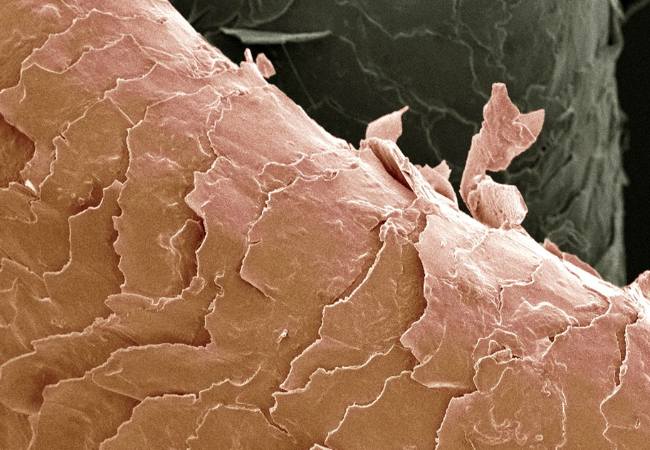
Aloe vera gel is also perfect for softening your cuticles. It’s a gentle, natural way to keep your cuticles moisturized and healthy without any harsh chemicals.
Why It works for cuticles
- Moisturising: Aloe vera is rich in water content, making it an excellent moisturiser for dry, rough cuticles.
- Soothing: It helps soothe any irritation or redness around your nail area, leaving your hands looking and feeling pampered.
- Quick Absorption: Aloe vera gel absorbs quickly, so you won’t be left with greasy fingertips.
How to use it
Apply Gel: Simply apply a small amount of aloe vera gel to your cuticles.
Massage: Gently massage the gel into your cuticles for a minute or two to help soften and moisturise them.
Let It Absorb: Allow it to absorb fully. You can do this as part of your nightly routine to keep your cuticles looking their best.
And there you have it—healthy, soft cuticles without the need for expensive creams or harsh ingredients!
9. Scalp treatment
Aloe vera gel is a wonderful natural remedy for your scalp. Whether you’re dealing with dryness, dandruff, or just want to give your scalp a little extra care, aloe vera can help soothe and hydrate.
Why it works for the scalp
- Hydrates Dry Scalp: Aloe vera is deeply hydrating, helping to alleviate dry, flaky patches on your scalp.
- Reduces Dandruff: The soothing properties of aloe vera can help reduce dandruff by moisturising the scalp and reducing irritation.
- Cooling Effect: Aloe vera has a natural cooling effect that can provide relief from an itchy or irritated scalp.
How to use it
Apply Gel: Apply a generous amount of aloe vera gel directly to your scalp.
Massage: Gently massage the gel into your scalp using circular motions. This helps stimulate blood circulation and ensures the aloe vera is evenly distributed.
Leave On: Leave it on for about 20-30 minutes to let the aloe vera work its magic.
Rinse: Rinse it out with lukewarm water or shampoo as usual.
Using aloe vera as a scalp treatment can leave your scalp feeling refreshed and healthy, promoting overall hair health.
10. Frizzy hair tamer
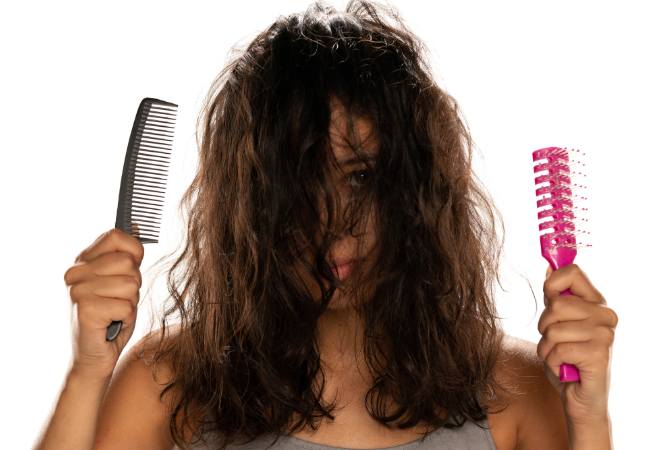
If you struggle with frizzy hair, aloe vera gel can be your secret weapon. Its moisturizing properties help smooth down frizz and keep your hair looking sleek and shiny.
Why it works for frizzy hair
- Moisturising: Aloe vera provides deep hydration to tame frizz and smooth out flyaways.
- Lightweight: Unlike heavy creams or serums, aloe vera gel is lightweight, so it won’t weigh down your hair or make it greasy.
- Adds Shine: Aloe vera helps enhance the natural shine of your hair, making it look healthier and more vibrant.
How to use it
Apply to Damp Hair: After washing your hair, apply a small amount of aloe vera gel to your damp hair, focusing on the ends and areas where frizz is most prominent.
Comb Through: Use your fingers or a wide-tooth comb to distribute the gel evenly throughout your hair.
Style as Usual: Let your hair air-dry or style as you normally would. The aloe vera will help keep frizz at bay and leave your hair looking sleek.
Say goodbye to frizzy hair days! Aloe vera gel will keep your locks smooth, shiny, and beautifully manageable.
Learn to choose the right aloe vera gel
It’s actually not that easy to choose the right gel. Many are packed with unnecessary ingredients, or even harmful ingredients!
You’d think: well, if aloe vera is such a natural product in itself, any aloe vera gel in the market follows this principle.
NOT TRUE. It is actually QUITE DIFFICULT to find a gel that doesn’t contain an ingredient that’s shouldn’t really be there.
Carbomer, phenoxyethanol, fragrances, green colouring!! I’m looking at all of you!
Below, some tips for you to learn to choose correctly. I wrote an entire article on the topic, check it here.
Tips on choosing the right aloe vera gel
- Look for products with a high percentage of aloe vera (ideally 90% or more).
- Avoid products with added fragrances or alcohol, which can be irritating to the skin.
- Consider organic options to avoid pesticides and other chemicals. This is a no-brainer, I know, but still, we tend to go for the cheapest at times, so don’t be tempted.
- Check the ingredient list to ensure aloe vera is THE FIRST ingredient listed.
- If the ingredients list shows the words “water” or “aqua” that means water has been added to the gel. Don’t buy it. It’s rubbish. Water should have not been added – it’s just a filler to bulk up the product.
- Xantham gum as a thickener is ok. Or other gums.
- Vitamin C in the ingredients list is ok. It helps stabilising the product as it is an antioxidant (it prevents oxidation which means it will extend the shelf life of the product by protecting it from degradation which happens over time due to exposure to air and light. Also, it has lots of benefits for the skin).
- Some companies add vitamin E, that’s also ok.
- Potassium sorbate as a preservative is acceptable too.
Pure aloe vera gel should be almost clear or slightly cloudy. ANY COLOUR LIKE GREEN has been artificially added!! Don’t buy!! It can irritate your skin. Just stick to the clear or slightly clouded gels.
Precautions and Potential Side Effects
Believe it or not, MANY people are allergic to aloe vera gel. I first found this out when selling my skincare at the local market, many would ask me if it had aloe vera content in the products so they would avoid buying it.
So MAKE SURE TO PATCH-TEST first if you’ve never used it before. Just in case.
- Patch test: Always perform a patch test before applying aloe vera to your face, especially if you have sensitive skin!!
- Allergies: If you experience itching, redness, or swelling, discontinue use immediately.
- Interaction with medications: If you’re using any topical medications, consult with your doctor BEFORE incorporating aloe vera into your routine.
- Quality matters: Poor quality or contaminated aloe vera products can cause skin irritation. Always purchase from reputable sources. Read my list on tips for choosing the right aloe vera gel above.
DIY Aloe Vera Gel
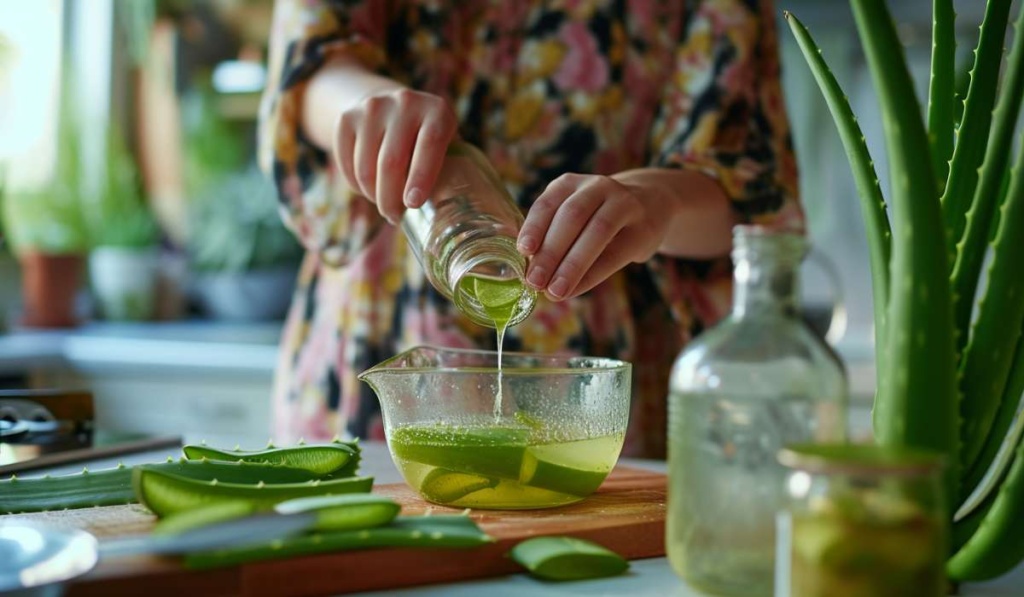
If you have an aloe vera plant at home, you can make your own gel:
- Cut a leaf from the plant close to the stem.
- Wash the leaf and let it stand upright for 15 minutes to let the yellow sap drain.
- Cut off the sides of the leaf and carefully remove the top layer with a knife.
- Scoop out the clear gel with a spoon.
- Blend the gel until smooth and store in an airtight container in the refrigerator for up to a week.
Tips for Best Results
- Consistency is key: Use regularly for best results.
- Less is more: A little goes a long way with aloe vera gel.
- Layering: Can be used under other moisturisers for extra hydration.
- Refrigeration: Keeping your aloe vera gel in the fridge can enhance its soothing properties, especially in hot weather or for irritated skin.
Remember, everyone’s skin is different. What works for one person may not work for another.
Pay attention to how your skin responds and adjust your use accordingly.
If you have any concerns, it’s always best to consult with a dermatologist.
Love to all.

